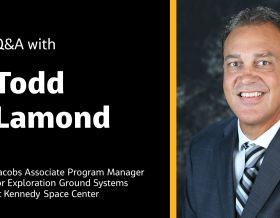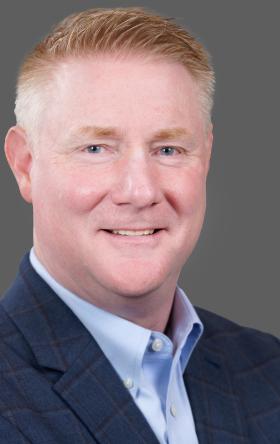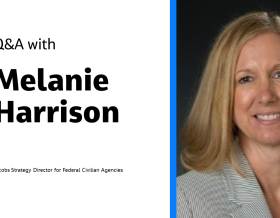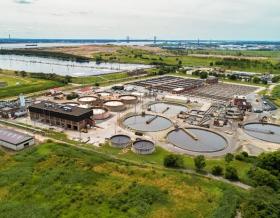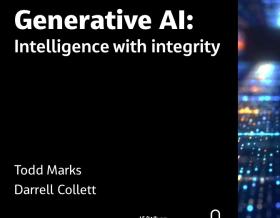Meet Graeme Cooper
Boston, Massachusetts, U.S.
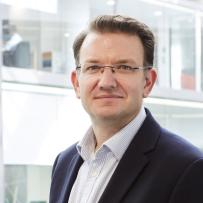
From developing and operating wind farms across the U.K., to converting his own 600-year-old farmhouse into an “effectively carbon neutral” property, Jacobs Global VP, Energy Transition Graeme Cooper is implementing strategies to reduce his carbon footprint in his personal and professional life.
It wasn’t one particular event that made Graeme a climate change problem solver. He realized he couldn’t wait for someone else to do something. He wanted to be a participant, not a passenger.
“That’s part of getting older, maturing, becoming a parent and taking responsibility,” he says. “We realize time is the enemy here. We need to take words into action and take collective responsibility for our impact on the planet.”
In all areas of his life, both personal and professional, Graeme is focused on interpreting the complexities of the energy transition, providing solutions and taking action to create a cleaner energy future for everyone.
“The energy transition requires a whole systems approach to minimize the risks of unintended consequences. You could argue, we cannot afford to make the transition, I would argue we cannot afford not to. We need to be grounded in science, facts and economics. ”
-
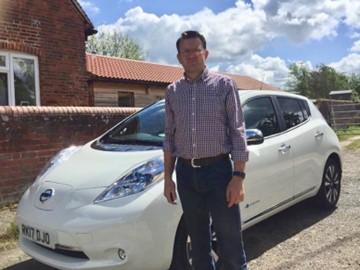
Graeme poses with his first EV in 2017 – a Nissan Leaf ! It changed his views on EVs, busted many of his preconceptions and changed the direction of his career.
-

Graeme and family embracing electric mobility in the form of Segways in Cornwall.
-

Graeme and wife Lucy implemented a range of low-carbon options as they renovated their “derelict” English farmhouse over a 10-year period.
You’ll often hear Graeme say, “It’s not a cliff edge, it’s a transition,” when discussing the energy transition. Professionally for Graeme this has included developing and operating windfarms, solar plants, supporting government on policy and educating organizations and governments on their energy transition journey. Personally, Graeme and wife Lucy implemented a range of low-carbon options as they renovated their “derelict” English farmhouse over a 10-year period.
Graeme recently relocated from the U.K. to Boston, Massachusetts, where he’s helping energy and power businesses match or exceed the scale and pace of the energy transition. He’s also helping non-energy businesses, recognizing that energy and power impacts all sectors when it comes to the energy transition.
From upstream clean generation, mid-stream utility networks and markets, to downstream clean energy consumption, Graeme is helping our clients deploy those strategies covering large-scale infrastructure, asset management, real estate, grid services, operating models and organizational structures. He’s using his 20+ years of experience consulting and advising on policy, regulatory, climate and market issues to innovate solutions for both private and public-sector clients around the world.
Walking the walk and talking the talk
“By ‘doing’ you bust your own myths and get a much richer understanding!” says Graeme.
A lover of cars, Graeme has been an electric vehicle (EV) driver since 2017, choosing to use his EV for most of his car travel. He heats his home using ground source heat pumps (the only source of hot water and heating) and installed smart EV chargers powered by clean electricity time-of-use tariffs — ensuring 73% of his electricity uses the grid when it’s at its cleanest and cheapest. He even treats his own wastewater on the property, meaning the only emissions from his home is clean water!
Professionally, Graeme has always worked in sectors going through significant change and disruption. He was deeply engaged in the roll-out of mobile/cell phone networks in the market’s early growth phase.
Over time, he switched to renewables spending time in the U.K. wind industry developing, owning and operating eight large scale commercial onshore windfarms, developing an offshore windfarm and playing an active role in the energy market and policy development. He also spent time leading the initial work that later became the U.K.’s “great grid upgrade” – the transmission upgrades needed to enable connecting over40GW of offshore wind by 2030. He also led the work on decarbonizing transport and heat — two of the dirtiest sectors as far as carbon emissions and air quality are concerned.
Graeme believes in a technology agnostic approach and lives by the mantra, “right fuel, right application, right time.” Because on the journey to net-zero we will need everything in the toolbox and sometimes “perfect gets in the way of good” to enable the transition.
Graeme was once asked by an 8-year-old after giving a talk at a school to describe what he did in one word. The word he came up with is “interpreter.” He describes himself as an interpreter of the complexities of the energy transition including the interplay between policy, regulation, engineering, finance and stakeholders.
As an inquisitive child wanting to know how things worked, he took apart old typewriters, tape recorders and fixed up bicycles. Graeme graduated with a degree in building and construction management, which was later followed by an MBA in energy which included study in Oslo, Stavanger, Paris and Berkeley.
Family time is precious to Graeme. In his spare time, he enjoys running with his two dogs, skiing, cycling, travelling, and renovating houses — of course! Since making the move to Boston he has feed his cultural enrichment by attending baseball games at Fenway Park and ice hockey at the TD Garden. He’s looking forward to catching a football or basketball game soon – the verdict is still out on if he will support Boston teams in all of these sports!
-

Graeme's secret skill - ”personal mobility”! He can ride Unicycle.
-
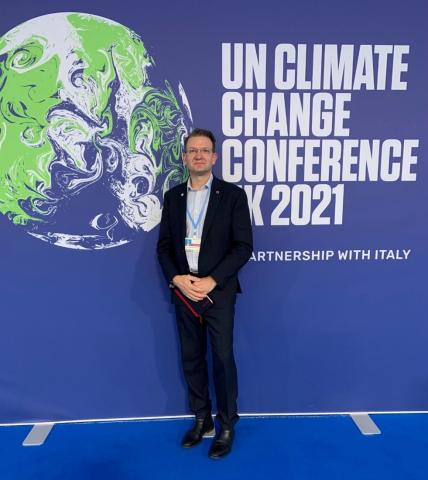
Graeme attended COP26 in Glasgow, 2021.
-
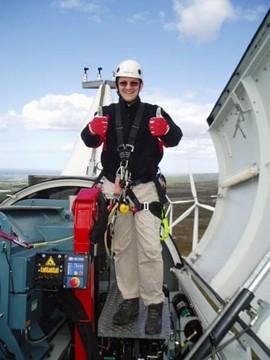
Graeme poses at the top of one of the turbines he worked on (Rothes Windfarm Scotland Siemens 2.3MW Turbine).
-

Graeme finishing the 2022 London Marathon – and yes, he ran with a traffic cone on his head.
Did you know?
-
2030
To meet net zero by 2050, we need to be largely well underway by the early 2030s as the ‘low hanging fruit’ is delivered like Solar, Wind, EVs and heat pumps.
-
80 M
Additional kilometers of power grids — or two times what it is today — required by 2040 according to the International Energy Agency. as we move towards “electrifying everything”. This assumes we use smart networks, optimized grid, smart demand side mana
-
50 %
Percentage of electric car registrations in the U.S. by 2030 according to the International Energy Agency’s World Energy Outlook 2023.
You might be interested in...
In the media
Power Magazine: National Grid’s Evolution: Branching Out from Deep Roots
Top Gear: IS THERE ENOUGH JUICE? Chris Harris talks EVs with Graeme Cooper from the National Grid
Delphina Interiors Magazine: 25 Beautiful Homes - Lucy and Graeme Cooper
Insider's Guide to Energy Podcast: Myth or reality? “EVs are coming, and our Grids are ready”








